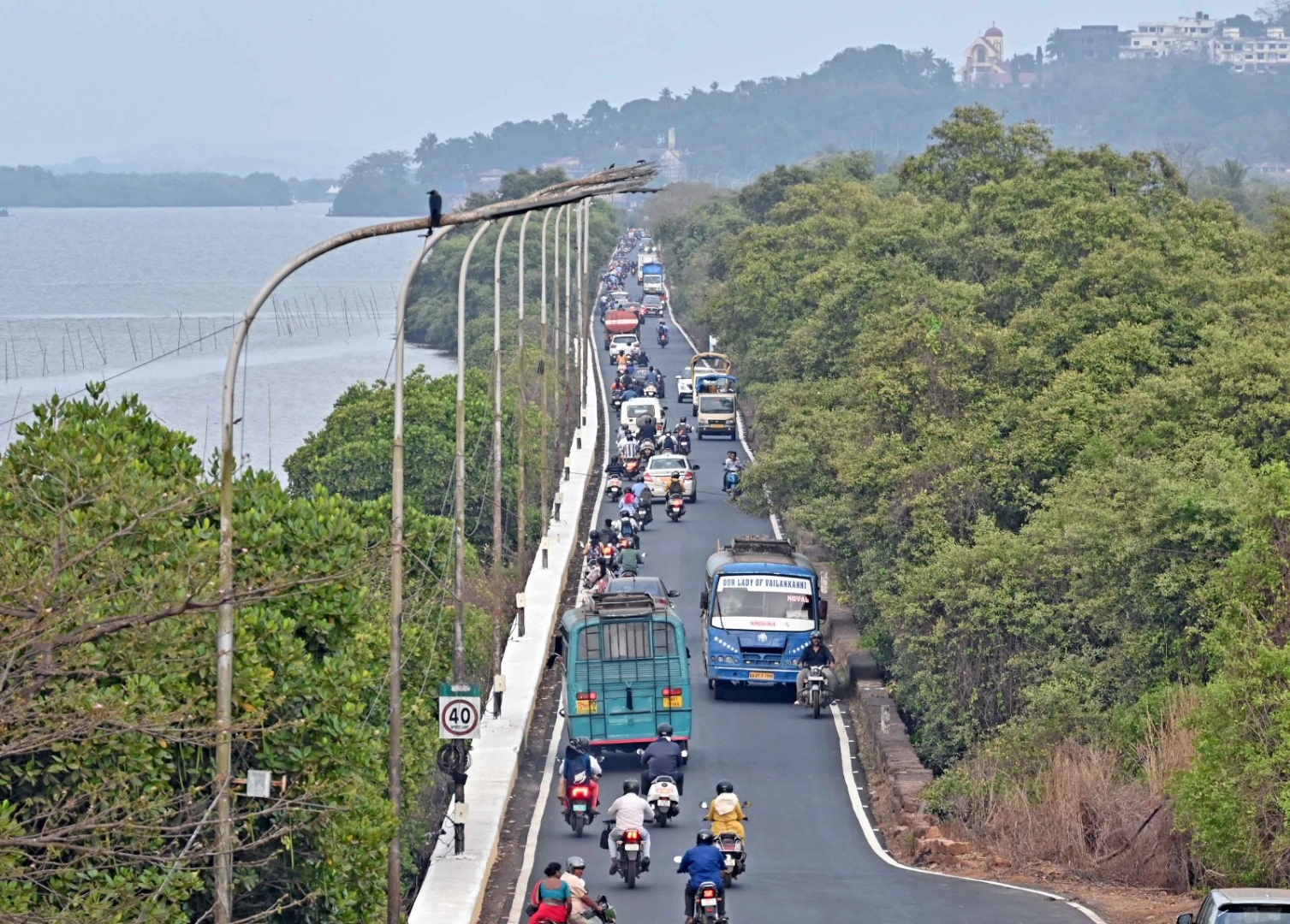
"The 'Ponte de Linhares' built in 1633–34 will be restored back to its original glory, of which every Goan will be proud of” the former Public Works Department (PWD) Nilesh Cabral had announced in the Goa legislative assembly back in early August.
A little over three months later, Cabral is gone from the cabinet, replaced with current Environment Minister Aleixo Sequeira, and the causeway (bridge) connecting the capital to Ribandar and North-eastern Goa and cause of "restoring it to its original glory" has seemingly slipped out of the memory of the top echelons in the PWD, a portfolio now handled by Chief Minister Pramod Sawant.
Enquiries with officials at the PWD headquarters have revealed that the proposal to restore the bridge, which is often referred to as the 'longest in Asia' at the time it was built by the Portuguese in the seventeenth century, is "not at all a priority".
As the parallel bypass to the Panaji-Ponda highway along the Kadamba plateau is a fully operational alternative for traffic bound eastward from the capital, the proposal has got pushed to the back burner, the official said.
The 3.2-kilometre-long bridge was built by the Portuguese back in the seventeenth century original for horse-carriages but subsequently reinforced to endure traffic when the plague forced the colonial rulers to shift their capital from Old Goa to Panaji nearly a century later.
The laterite stone bridge with arches has several of its spans in a weak condition and damaged due to continuous tidal effect as well as soil erosion and blockage of many of its 40 archways due to siltation. Past governments since the early 1980s have executed repairs and even resorted to mangrove plantation on the southern side to minimize the tidal effect on it.
Also, in a bid to avoid more damage with the passage of time, past governments diverted movement of heavy traffic from the bridge to the Kadamba bypass and also imposed speed restrictions including erecting hump speed-breakers at a few spots across its length.
In more recent years a part of the bridge had sunk at the Ribandar end which was repaired by the PWD. In August last year, the department shut one lane again on the Ribandar side because the base under that archway had corroded.
The exit from the cabinet of Cabral, who so enthusiastically promised a restoration of the heritage bridge which "every Goan will be proud of" in the House, may have encouraged the burying of the restoration file in heaps of bureaucratic red-tape in PWD's Altinho headquarters.
But with the approaching decennial exposition of the relics of St Francis Xavier beginning in November next year, the proposal for restoration of the causeway could soon become a 'top priority' for the very same officials for whom it is today "not at all a priority".